Dancefloor Rescues and Vinyl Legends: How Indeep's "Last Night A DJ Saved My Life" Helped Build DJ Culture
The Twelve Inch 165 : Last Night A DJ Saved My Life (Indeep)
In the Benelux, where Indeep’s 1982 anthem "Last Night A DJ Saved My Life" was a chart-topper, we sang along with our own cheeky lyrics—“Last Night A DJ Saved My Wife.” Just kids being kids. But while we joked, the track was no joke in Europe: it became a huge hit, selling over 100,000 copies in France alone.
Even with just a single moment in the spotlight, Indeep’s story is a fascinating one. For starters, most people today think of Last Night a DJ Saved My Life as a disco track, but wasn’t disco supposed to be dead after 1979? And while the song sold a huge number of copies, who actually made money from it? Why did Indeep become a hit in Europe but not climb the pop charts in the U.S.?
Yes, it’s partly about the waning influence of dance music in America and its continued dominance in Europe during the early 1980s. But there’s more to it than that. Last Night a DJ Saved My Life marks the birth of one of the most iconic dance tracks of all time, and a key milestone in the rise of DJ culture.
It’s also a story of shrewd business moves in a ruthless industry. So buckle up, and “let’s do it in the mix”. (And hey, don’t forget to record some sounds from your everyday life. You never know when they might come in handy.)
Welcome, I’m Pe Dupre and I’m really glad you’re here. This is “The Twelve Inch”, my newsletter that tells the history of dance music between 1975 and 1995, one twelve inch at a time.
If you’ve received this newsletter, then you either subscribed or someone forwarded it to you. If you fit into the latter and want to subscribe, please do so. That way you will not miss any of my weekly episodes.
🕺Did a DJ Really Save Your Life?
Let’s be honest, how many nights out do you truly remember not for the club, the crowd, or the drinks, but for that one track that dropped at just the right moment, transforming an ordinary night into something unforgettable? From the earliest days of disco, DJs have steadily grown in importance. Back then, technical limitations forced them to be inventive, but it didn’t take long before people started going to clubs not just for the music, but for the person behind the decks.
Last Night a DJ Saved My Life by Indeep is one of the rare songs that captures that exact magic. It’s a love letter to the DJ, giving them the overdue recognition they deserve.
The booth of the iconic Studio 54. Even they didn’t have Technics 1200 SL’s at that time
Released in 1982 on Sound of New York Records, the track not only cemented the DJ’s place in pop culture, it also quietly helped usher in a groundbreaking technique that would shape club culture for decades: beatmatching. Its release coincided with the rise of the Technics SL-1200 turntable, known for its adjustable pitch control, perfect for mixing tracks in sync. And Last Night a DJ Saved My Life was one of those records that just always worked in a beatmix.
🎤 The Mysterious Case of Indeep: Who Were They?
The story of Indeep is a bit like the song itself, simple on the surface, but far deeper (pun intended) once you dig. Formed in New York City, the group was essentially the brainchild of Michael Cleveland, a Bronx-based songwriter and musician with a knack for hooks that stuck. The inspiration for “Last Night A DJ Saved My Life” came from the clubs as Michael explained : “At certain clubs where the dj mixes records, the response is even as great as a band would get in a live performance; You have to make the music with that in mind, giving the dj optimum flexibility” And from a business perspective he added “This way they get into the record more and play the record more”
Indeep’s most recognizable lineup featured Cleveland alongside two female vocalists: Réjane Magloire and Rose Marie Ramsey. Magloire, a trained opera singer born in Zaire but raised in New York, brought a distinctive melodic polish to the track, while Ramsey brought sass and presence in spades. But make no mistake, this was Cleveland’s vision.
🛠️ The Beatmixing Boom: Why DJs Fell in Love with It
During the disco era, DJs were already a big deal, a skilled beat-mixer could make or break a dance floor. But in the late ’70s and early ’80s, beatmixing was still a developing art. Pioneering DJs like Larry Levan, Shep Pettibone, and Tony Humphries were refining the technique live, carefully matching the tempo of two tracks to create seamless transitions. For them, it wasn’t just about playing records, it was about telling a story through sound. But to do that, they had to navigate some serious technical limitations.
Common Beatmixing Problems DJs Faced:
Live drummers with inconsistent timing (good luck mixing an (early) disco record)
No intro/outro beats for cueing
No DJ-friendly 12-inch edits
Turntable limitations. Not every club had turntables with variable speed
Indeep’s track helped solve a lot of the challenges DJs were facing at the time. It featured an extended instrumental section, a mid-tempo groove clocking in at 110 BPM, crisp kick patterns, and that stripped-back, post-disco synth work that left plenty of room to mix. Back in 1982, they called it a “flexible record” 😁, and for good reason. Alongside the 12-inch version, DJs got a longer instrumental and even separate tracks for the effects, giving them the freedom to get creative in the mix. “We thought it would be an interesting approach to let people put down the sound effects wherever they want to” as Michael Cleveland said at the time. There was plenty to work with, and everything was perfect for beatmatching on the Technics 1200s.
The “holy grail” of turntables in the early eighties!
That was exactly what my friends and I aimed to master when we were DJing at local parties. You needed the right records, plenty of practice, and just the right setup to really work your magic. But when it all came together, you were the hero of the night, at least until the next party, when another DJ tried to outdo you. We made mixtapes and constantly tried to one-up each other, always chasing that perfect set.
🏙️ The Sound of New York: Enter Gene Griffin
Behind the release was Gene Griffin, the head of Sound of New York Records. Originally from Georgia, Griffin moved to Harlem after serving in the army, where he began carving out his place in the music industry. “Back in those days we all hung around 7th Avenue at 135th Street," Griffin recalls. "Music was something you were naturally drawn to because there really wasn't anything else to do but go to work and hang out. Then I just started to say, 'Well, maybe I should do some of this.”
Gene Griffin began his career as a promoter for CBS Records, but after a few years, he was laid off. As New York’s club culture began to explode, Griffin saw an opportunity in dance music and decided to dive in. But before launching his label, he served an 18-month prison sentence for selling weed on the streets.
When he returned, he founded Sound of New York Records, a small, independent label with big ambitions. Griffin embraced the raw energy of underground dance music, but more than anything, he was chasing that one breakout hit that could turn everything around. And with Last Night a DJ Saved My Life, he found it.
The absence of any photos of Cleveland and Griffin together speaks volumes about the nature of their relationship.
Although Michael Cleveland was the creative force behind the track, the matter of rights and royalties likely became complicated later on. There’s no public record of any fallout between Griffin and Cleveland, but all the ingredients for a classic industry dispute were there. Griffin had a reputation for being, let’s say, entrepreneurially aggressive. Unlike other artists of the era, such as Man Parrish with Hip Hop, Be Bop (Don’t Stop) (read his full story in episode 152), Cleveland retained full writing credit. While he may have missed out on some of the master royalties, he held on to the publishing rights.
Gene Griffin (right) with some of his later artists he managed
The success of Last Night a DJ Saved My Life helped fund other projects and ultimately paved the way for Griffin’s next chapter: a high-profile partnership with Teddy Riley and the formation of Guy, pioneers of the New Jack Swing sound.
🌍 Success Abroad, Silence at Home
Despite its infectious groove, Last Night a DJ Saved My Life never made it into the Billboard Top 40, not even the Hot 100. It did, however, find success on more niche charts, reaching #10 on the Billboard R&B chart and climbing to #2 on the Dance Club Songs chart, proving its strength in the clubs. But the real breakthrough came in Europe, where the track soared: it hit #13 in the UK and reached as high as #2 in the Netherlands, Belgium, and France. In France alone, it sold over 100,000 copies.
So what happened?
Why It Didn’t Dominate U.S. Pop Charts:
Post-disco stigma: After the disco backlash of 1979 disco remained a “dirty word” for the American mainstream. Dance records had to go undercover as R&B or pop.
Independent label issues: Sound of New York lacked the promotional muscle of major labels.
Radio gatekeeping: Many top 40 stations simply wouldn’t touch anything that sounded too “club.”
💡One-Hit Wonder, Eternal Anthem
Indeep never managed to replicate the success of Last Night a DJ Saved My Life. Follow-up singles like When Boys Talk failed to make an impact, partly because they stuck too closely to the same formula. Michael Cleveland and Indeep never really evolved their sound, and the novelty began to wear thin.
Another factor was that Last Night felt like a final spark from the disco era. Built on the same DNA as Good Times by Chic or Rapture by Blondie, it showed that, even in 1982, there was still room for that classic groove. But while the track proved a disco-infused sound could still catch fire, it wasn’t enough to sustain a long-term career in a rapidly changing musical landscape.
And yet, the song refused to fade. Over the years, it’s been covered and reimagined by multiple artists—some versions even becoming club hits in their own right. One of the most notable is Mariah Carey’s take for the Glitter soundtrack, featuring Busta Rhymes, which gave the track new life for a new generation.
Three years later Seamus Haji had a big dancefloor hit with his version
And there’s the recent version by Tracy Young, Niki Haris & Donna De Lory
Even The Smurfs have their version 😱
So why does the song keep coming back? It’s that bassline. That unforgettable spoken-word monologue. And the universal sentiment at its core.
It’s likely that emotional resonance that led Bill Brewster to use Last Night a DJ Saved My Life as the title for his definitive history of DJ culture.
James Murphy of LCD Soundsystem once described how both the book, and by extension, the song, transformed his view of dance music and DJing. He admitted that, at first, he dismissed DJs entirely. But after discovering the culture and reading Brewster’s book, he came to understand the powerful role DJs play in shaping a night, setting a mood, and connecting with the crowd through their track choices. Songs like Last Night a DJ Saved My Life helped open his eyes, and eventually led him to embrace DJing himself.
In 2025, Billboard magazine ranked "Last Night a DJ Saved My Life" number 62 in their "The 100 Best Dance Songs of All Time", writing, "Indeep's signature post-disco hit spawned catchphrases still found in the DNA of dance music decades later because its magnetic groove struts it like it talks it, tapping into the lifeforce of everything that gets us past boredom and broken hearts and gets us up, gets us on, gets us down. And when it comes the DJ's time to preach, he's got a better pitch than the overwhelming majority of would-be messiahs: There's not a problem that I can't fix/ 'Coz I can do it in the mix."
📢 Your Turn
💬 What’s your memory of hearing this track for the first time? Did a DJ ever actually save your life—or at least your night?
👇 Drop a reply and let me know. Your stories help keep these songs alive.
👉 Like this kind of deep dive into dance music history? Help me by sharing the posts so we can build the community.
Thanks for reading. See you on the floor.
Further reading (or should I say watching)
There are a number of interesting video’s/links :
So You Wanna Hear More ?
I thought you would !
It’s fun to write about music but let’s be honest. Music is made to listen to.
Every week, together with this newsletter, I release a 1 hour beatmix on Mixcloud and Soundcloud. I start with the discussed twelve inch and follow up with 10/15 songs from the same timeframe/genre. The ideal soundtrack for…. Well whatever you like to do when you listen to dance music.
Listen to the Soundtrack of this week’s post on MIXCLOUD
Or on Youtube :
So what’s in this week’s mix ?
Back in 1982 and ’83, when we dropped Last Night a DJ Saved My Life into a set, it opened the door to either mid-tempo Italo disco or that smooth, rubbery groove of early synth-funk. For this week’s mix, I’ve leaned into the latter.
It’s a curated snapshot of early ’80s mid-tempo synth-funk, featuring heavyweights from both sides of the Atlantic. Expect grooves from Luther Vandross, René & Angela, Cheryl Lynn, Shalamar, and Kool & The Gang, with a tasteful touch of UK flavor courtesy of Junior and Heatwave.
Enjoy
Next week, I’ll be diving deep into a disco gem I’ve long adored, by an artist who remains a bit of a mystery to me: Zulema. It’s shaping up to be a fun journey of discovery, for both of us.

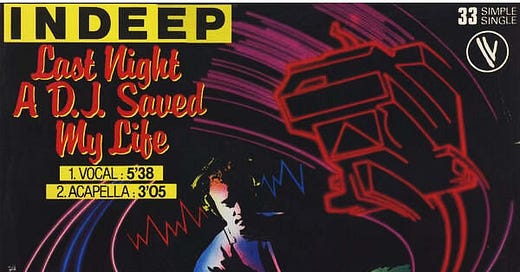



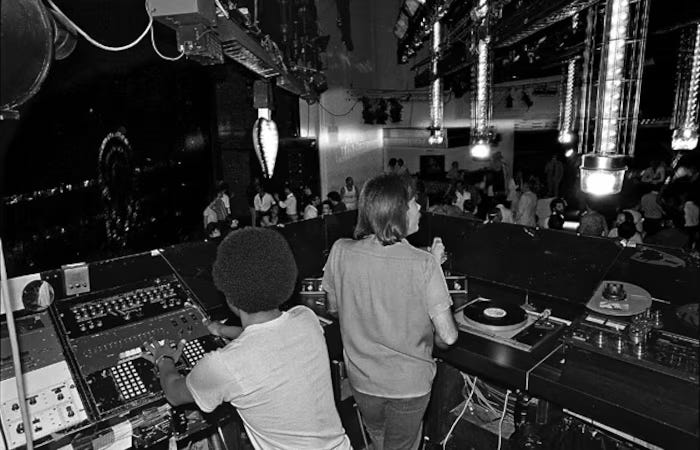
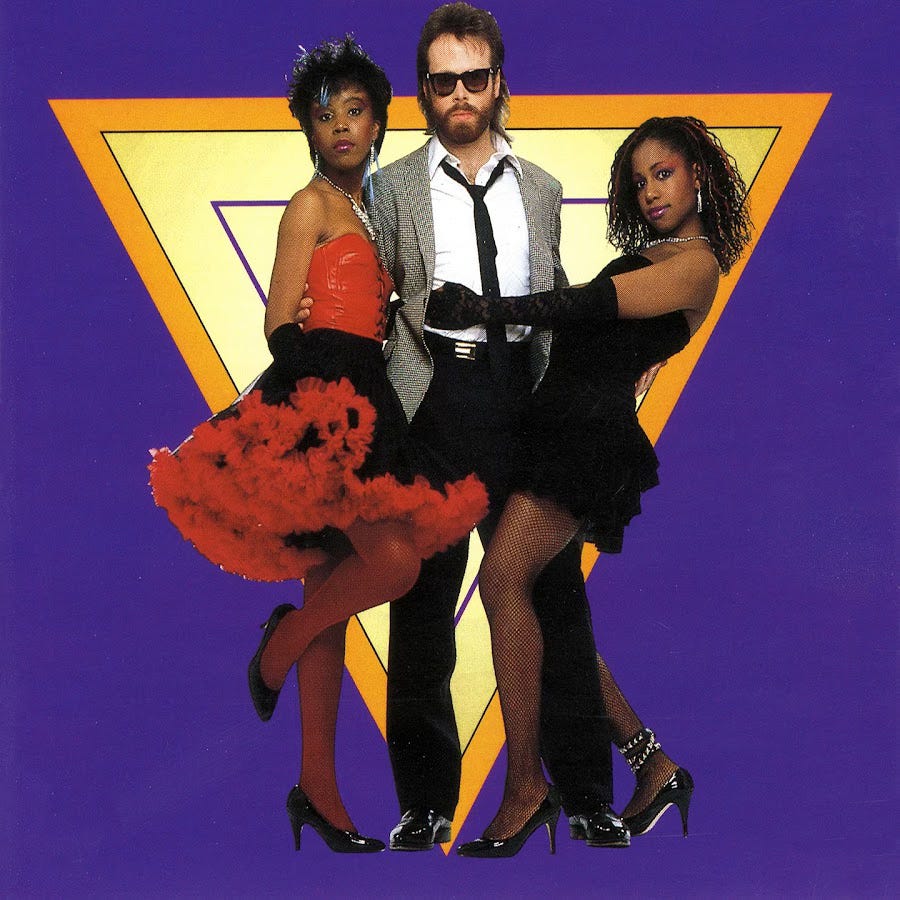
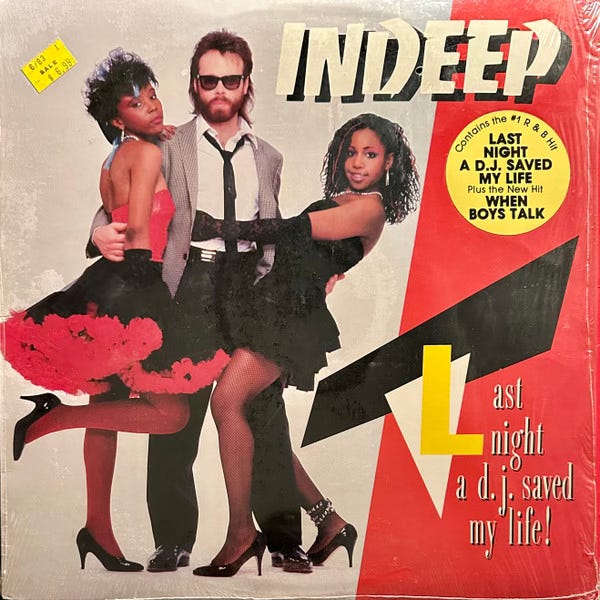
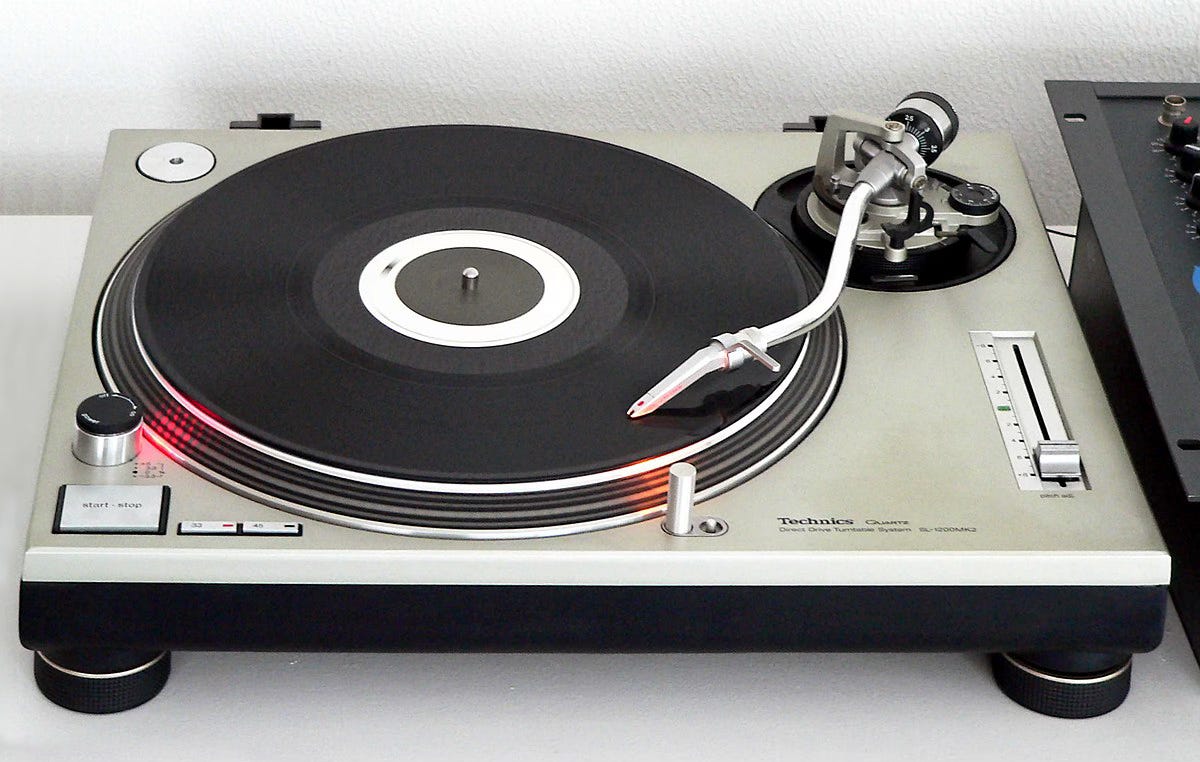
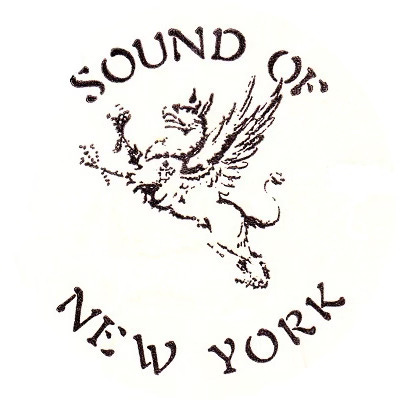
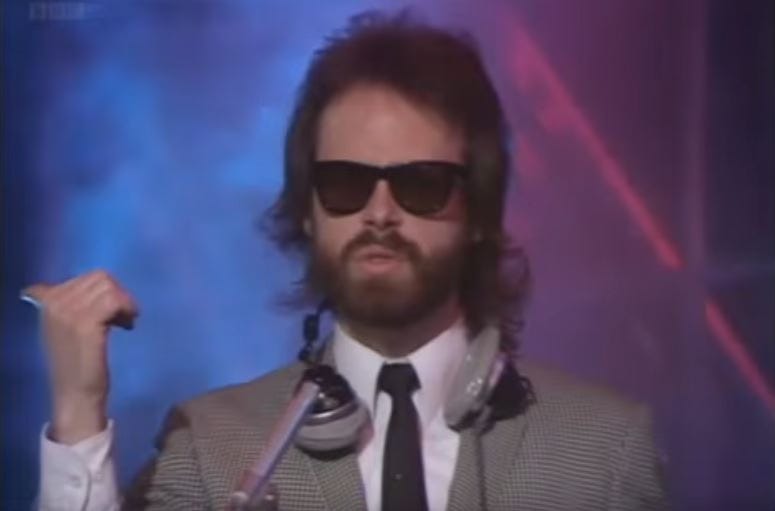
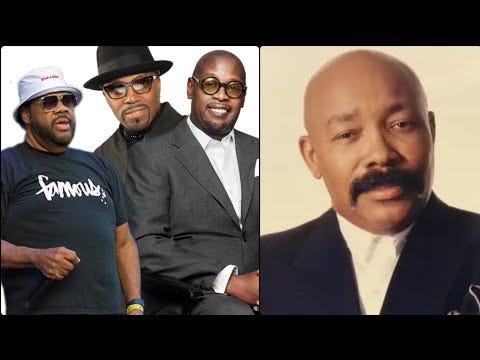
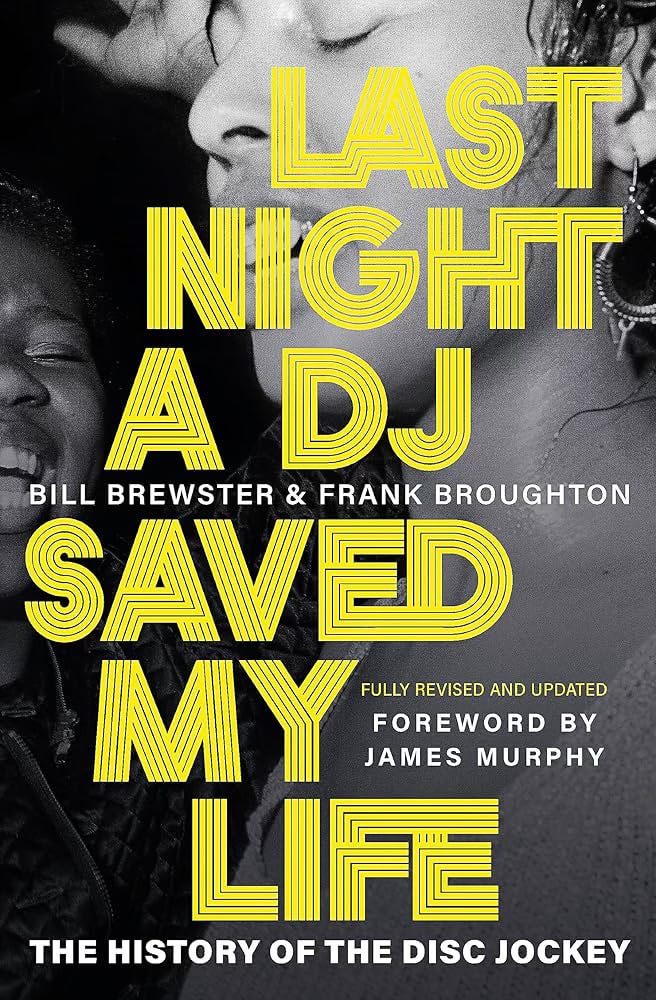
By the time this song came out, my 12” budget was already going to hip hop. But I always liked it, that relaxed groove and relatable themes made it feel like an old friend on first listen. Magloire later went on to sing in a version of Technotronic, co-writing and singing on songs like Move That Body from their second album. Great post!
Throughout the night DJing at Limelight NYC 85. I slipped in the clave vox only extended version after the 109 Mix / Renegades of Funk and the crowd bought it hook, line and sinker. Nobody ushered me out of the booth which was the custom then when the late night DJ showed up whenever they felt like it. Extended mixes are a thing of the past unless you include hot models putting their hands in the air to faceless non-music (LCD excepted) while the ravers revel in not quite dancing but pointing at the tables in a weird salute to the button pushers and their beat rot.
What a great In-deep dive into the last great disco song. My memory goes back to early 83 when I worked records at Buddah right before the end of the storied label. Freda Payne had a almost hit In Motion and DJ was there too. On the phones I went until someone said stop promoting DJ it's a novelty record and go heavy on Freda. Well the last almost 50 years have told the story. The 80s were the big clubbing nights turning into days. When the crowd moved you felt it. I DJ'd for free when I put on fashion shows and avant-garde performance pieces for my label 109. Read about where I got some of my private stock, "My Year at Island 🏝 83" in my stack.
Q: Why was Buddah promoting S.O.N.Y. in 83? Do you know?
I have a tape of that night's set if you ever want that particular clave uh uh baby... mix digitized. It's got heavy breathing down to a science. There ain't a problem I can't fix I can do it in the mix cause if your man gives you trouble I can be there on the double...
Somebody stop me!